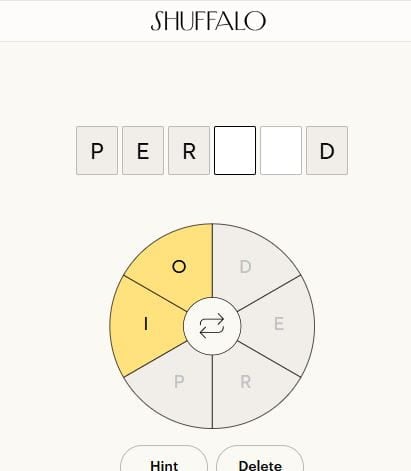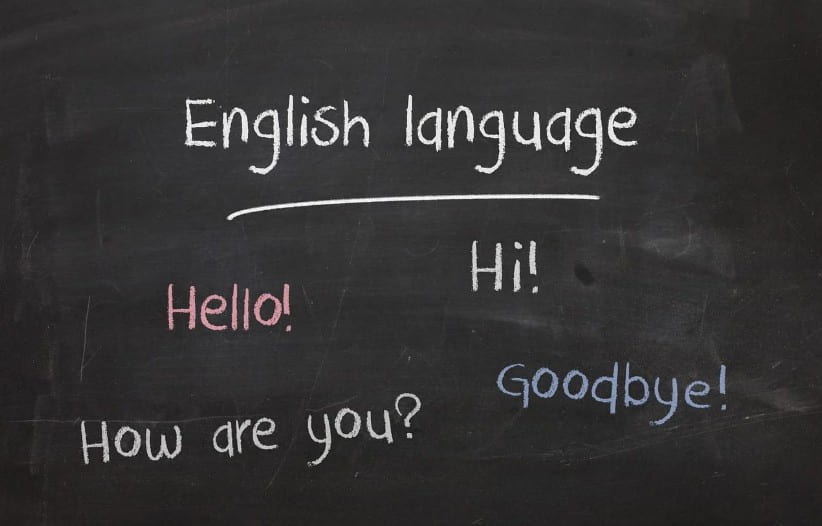Click here to read this mailing online.
"Larry Ferlazzo's Websites of the Day…" - 5 new articles
The New Yorker’s New Word Game, Shuffalo, Is Great For ELLs
The New Yorker magazine recently announced a new online word game called Shuffalo. In it, you’re first provided a few letters and then have to make a word out of them. Once you’ve completed that puzzle, another letter is added to the collection, and you have to make a word out of all of them. Then, yet another letter is added, and so on. It’s not an easy game. However, it also provides you with the ability to request as many hints as you like, and that’s what makes it great for English Language Learners. Project the game at the front, and then give everyone, or pairs, a mini-whiteboard. See who can create the first word. Then, move to the second one. If students feel stumped, just click “hint” and get a letter. Add another letter if students still don’t get it. I’m adding this info to The Best Ideas For Using Games In The ESL/EFL/ELL Classroom. Around The Web In ESL/EFL/ELLEight years ago I began this regular feature where I share a few posts and resources from around the Web related to ESL/EFL or to language in general that have caught my attention. You might also be interested in all my Best lists on teaching ELLs. Also, check out A Collection Of My Best Resources On Teaching English Language Learners. In addition, look for our latest book on teaching ELLs, The ELL Teacher’s Toolbox 2.0. Here are this week’s choices: Ozu lets you search video clips to find what you’re looking for – it could be useful in class. Learning Briefs — Series 3: Cultivating and Supporting Quality Teachers of Newcomer and Multilingual Learners is from The Internationals Network. INTERNATIONALS NETWORK RESOURCE BANK FOR SUPPORTING MULTILINGUAL LEARNERS is from…the Internationals Network. I’m adding it to THE BEST RESOURCES TO HELP EDUCATORS TEACH ELL NEWCOMERS. The Immigration Initiative at Harvard has a bunch of very useful educator and policy briefs on ELLs, like this one on Implementing Culturally Responsive Teaching Practices for Immigrant-Origin Students that I’m adding to The Best Resources About “Culturally Responsive Teaching” & “Culturally Sustaining Pedagogy” – Please Share More! Considerations and Suggestions When Adopting a Reading Difficulties Screener for Multilingual Learners is from Californians Together. Newcomer Support Resources comes from the Center for Equity for English Learners (CEEL).
Sabi and Avatalks are two new Ai-powered language learning tools. Presentation, Practice, Production Common Mistakes is from The Barefoot TEFL Teacher. I had never heard of “PPP” before, but I guess it’s an ESL version of “I do, we do, you do.”
This Week’s Free & Useful Artificial Intelligence Tools For The Classroom geralt / Pixabay
At least, for now, I’m going to make this a weekly feature which will highlight additions to THE BEST NEW – & FREE – ARTIFICIAL INTELLIGENCE TOOLS THAT COULD BE USED IN THE CLASSROOM. Here are the latest: My Mind is an AI-powered browser extension that’s like a bookmarking tool on steroids. Read more about it here. Bohrium looks like an interesting AI tool for research. I’m adding it to The Best Tools For Academic Research. Text2Music uses AI to create free…music. If ChatGPT is blocked, the AI Story Generator is a tool where students can generate stories they want to read.
Indianapolis Public Schools to expand staff use of AI in pilot program, school board to consider draft policy is from Chalkbeat.
Generate podcast-style audio lessons in Google Classroom using Gemini is from Google. Video: Song Around The World: “Fly Like an Eagle”
I have shared many of Playing For Change’s Songs Around The World, and here’s a recent one: Jan. 27th Is International Holocaust Remembrance Day – Here Are Teaching & Learning Resources peter89ba / Pixabay
From The U.S. Memorial Holocaust Museum: The United Nations General Assembly designated January 27—the anniversary of the liberation of Auschwitz-Birkenau—as International Holocaust Remembrance Day. On this annual day of commemoration, the UN urges every member state to honor the six million Jewish victims of the Holocaust and millions of other victims of Nazism and to develop educational programs to help prevent future genocides.
You might be interested in The Best Sites For Learning About The Holocaust.
More Recent Articles |




